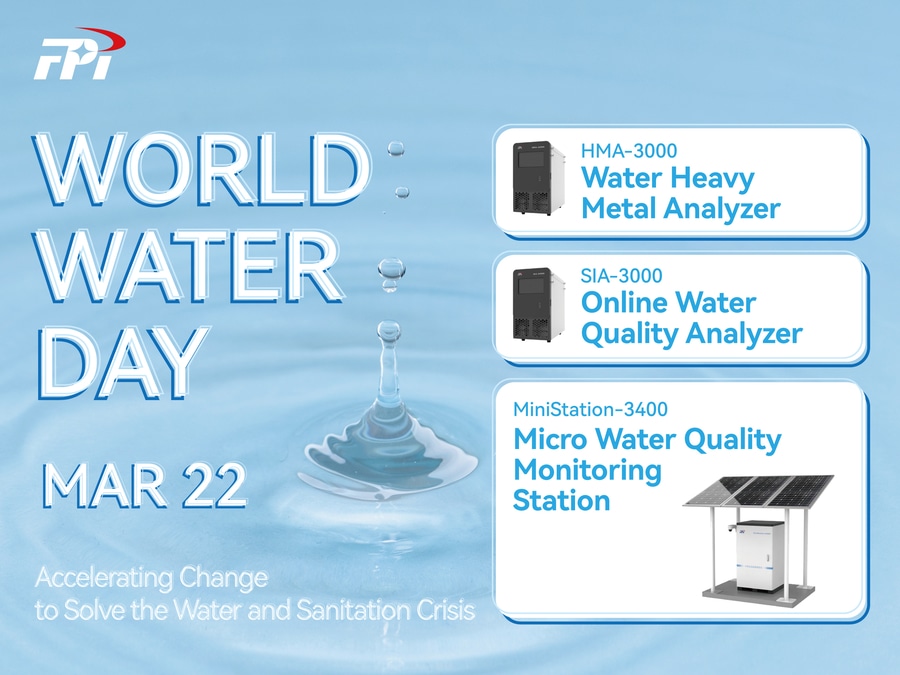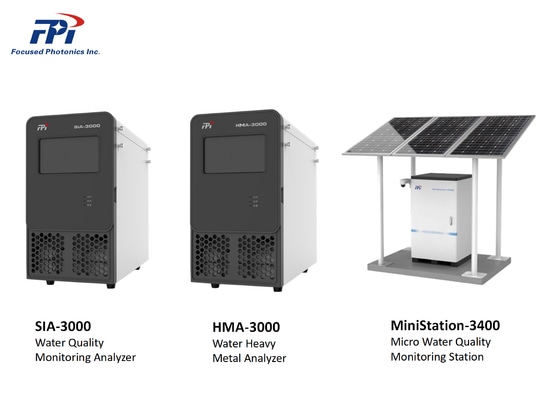
#Industry News
World Water Day 2023: Accelerating Changes to Solve Water and Sanitation Crisis
FPI Water Quality Analyzers
* 1.4 million people die annually and 74 million will have their lives shortened by diseases related to poor water, sanitation and hygiene. (WHO 2022)
* Today, 1 in 4 people - 2 billion people worldwide - lack safe drinking water. (WHO/UNICEF 2021)
* Almost half of the global population - 3.6 billion people - lack safe sanitation. (WHO/UNICEF 2021)
* Global water demand (in water withdrawals) is projected to increase by 55 percent by 2050. (OECD 2012)
Numerous people around the world are facing the crisis of lacking safe drinking water and safe sanitation according to the lasted data released from many worldwide organizations. In 2015, the world committed to Sustainable Development Goal (SDG) 6 as part of the 2030 Agenda - the promise that everyone would have safely managed water and sanitation by 2030. However, from the reports in the recent years we can see that we are seriously off-track now. Due to the dysfunction throughout the water cycle caused too many global issues from health the hunger, gender equality to jobs, education to industry, and disasters to peace.
There is an urgent need to accelerate change - to solve the water and sanitation crisis. In fact, this is not a situation that any single actor or group can solve, only attracting the governments’ attention and starting their actions can meet the preset goal.
To solve the crisis of lacking safe drinking water and safe sanitation, the first and essential step is to prevent the present surface water resources and underground water resources from getting polluted. What types of water pollution we are living with?
Underground Water Pollution
The entire world's groundwater is threatened by pollution from agriculture, urban areas, solid waste, on-site wastewater treatment, oil and gas extraction and refining, mining, production and other industrial sources. The primary cause is poor control of these activities, which exceeds the natural attenuation capacity of subsurface soils and strata. Salinization due to over-exploitation of groundwater, especially in coastal areas, is another serious problem, especially for communities that depend on groundwater for drinking water.
Pathogenic Contamination
Pathogenic contamination from surface and groundwater in many areas is a major threat to human health and is part of the cost of water treatment that contributes to many communities. Bacterial contamination, represented by municipal wastewater collection and treatment, has been reduced in most developed countries over the past few decades. In contrast, pathogenic microorganisms are usually the most serious water quality problem in developing countries.
Nutrient Pollution and Eutrophication
Eutrophication from human wastewater, livestock waste, fertilizers, air deposition, and erosion is a persistent and pervasive water quality problem. While wastewater treatment has increased in many regions, little progress has been made in reducing nutrient loads from nonpoint sources, including agricultural and urban runoff and air deposition in freshwater and marine systems. While specific thresholds for these processes are uncertain, interventions in the global nutrient cycle may have reached planetary boundaries beyond which marine and freshwater ecosystems cannot recover.
Permanent Toxic Chemicals
Toxic contaminants include trace metal elements cadmium, lead and mercury; pesticides and their by-products such as dichlorodiphenyl dichloroethane (DDT) and chlordecone; industrial chemicals and by-products from combustion. Still used in many places, these substances can accumulate in aquatic systems and lead to sedimentary pollution; they can be found in 90% of water bodies. The pollutants of greatest concern are substances that are persistent, toxic and bioaccumulative.
Based on the increasing prominent water pollution monitoring and treatment crisis, FPI researched and developed multiple types of water pollution monitoring analyzers and system for different components, and deployed thousands of installations around the world for supporting local governments’ monitoring and treatment.
SIA-3000 Water Quality Monitoring Analyzer
SIA-3000 series is a new generation mini-water quality online analyzer with high integration, easy operation, and high accuracy; it is suitable for micro water stations and mobile water stations. This system is a series online facility for chemical oxygen demand(COD), total nitrogen(TN), total phosphate (TP), ammonia, and heavy metals.
HMA-3000 Water Heavy Metal Analyzer
HMA-3000 series heavy metal online analyzer adopts the principle of anodic dissolution voltammetry detection, and monitoring factors cover lead, cadmium, zinc, mercury, arsenic, etc. It is suitable for online monitoring of surface water, drinking water, municipal sewage, industrial process water, pollution source wastewater discharge, etc.
MiniStation-3400 Micro Water Quality Monitoring Station (Solar Power Type)
MiniStation-3400 series is a micro station system to meet the outdoor scenario without utility power for automatic online monitoring of water quality. It is suitable for online monitoring of black smelly water bodies, and river cross-sections.
If any interests, please feel free to visit FPI’s official online store: https://online.fpi-inc.com/






